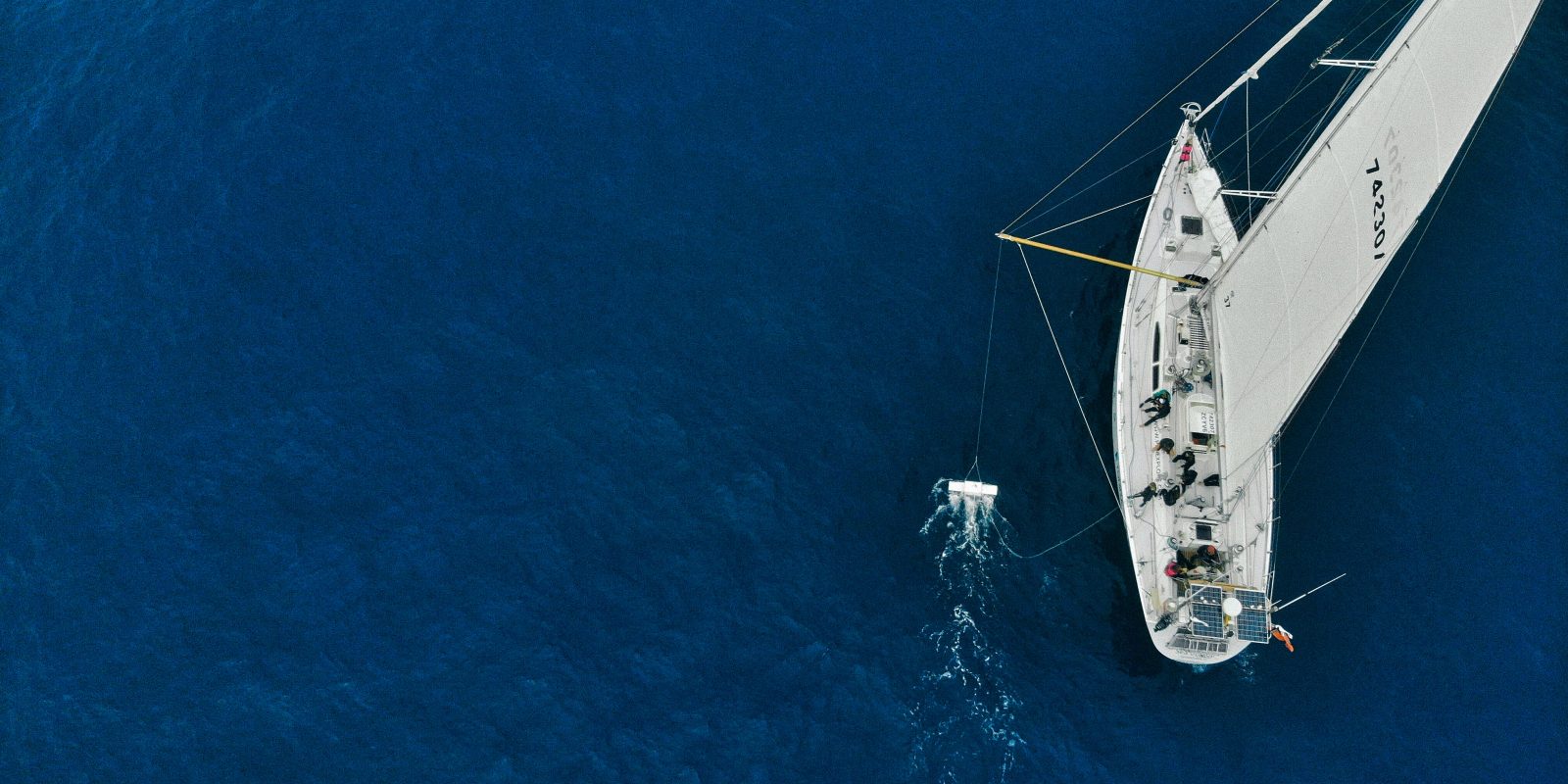 eXXpedition North Pacific crew member and TV presenter Victoria Fritz explores how this voyage has shaped how she thinks about plastic
eXXpedition North Pacific crew member and TV presenter Victoria Fritz explores how this voyage has shaped how she thinks about plastic
“We wake to a cling-film sheen on the water and a plan to steer a 130 nautical mile course to a group of remote, uninhabited islands. A few hours in, with a bite in the air, we pierce a hundred foot wall of fog that cloaks the ocean between US and Canadian land.
In this nowhere place, the sunlight diffuses over the growing swell. Adrenaline rises. Everything looms and recedes in greys and whites. Saltspray renders my sunglasses useless. I adopt a squint and wide stance I hope suggests a confidence in our progress. We hunker down, backs to the wind, in fleeces and wet weather gear. We sail for the Broken Islands. A promised place of wild beauty.
I reflect on the talk our resident scientist gave as the sun set over Diver Bay in the Gulf Islands on a perfectly clear summer evening just one night before. “We women sail in a plastic boat, powered by plastic sails hoisted by plastic ropes. Even our waterproofs are covered in plastic.” How ironic, I think now, looking at our drenched skipper in full waterproofs, grinding in the mainsail through gritted teeth and practised hands.
Polymers propel us forward. Our mission is to learn about the invisible sea of plastic beneath our hull. To make the unseen seen. On board and down below deck is Imogen Napper. Imogen’s first research paper led to the removal of plastic in facial scrubs across the world. Of all people on board, surely Imogen would be the first demonise the plastic world in which we live. Not so, she tells me, as she clears away our lunch dishes.
In the aftermath of Hurricane Maria and Irma, Imogen slept under a tarpaulin. By day, she coordinated the delivery of medical aid, shelter, food, and water to people who had lost everything. As a military liaison officer, almost all of the emergency aid Imogen administered was enabled by plastic. Plastic syringes and drips, water butts, freeze dried packaged food, sacks of grain, whole tented communities.
Plastic is one of humanity’s greatest achievements. By rearranging simple carbon and hydrogen atoms in ever more creative ways, lives that have been ripped apart by natural disasters can be pieced together by plastic. Imogen, our resident scientist and clean ocean advocate, saw this first hand.
A hundred years ago, Le o Baekeland’s company, Bakelite, adopted the logo of the infinity loop. The boastful strap line was Bakelite: The Material of a Thousand Uses. What an underestimation that turned out to be. 300 million tonnes are produced every year. A thousand years on from today, will we still find plastic in our oceans, in our drinking water and in the air that we breathe?
The problem, it seems to me, isn’t plastic itself. Plastic is just the symptom. The real problem is over-consumption. Human ingenuity will always rise to the challenge of need. We are extraordinary like that. The problem with people is that time and time again, need slides impercptibly into greed.
As a kid, the environmentalists’ bete-noir was deforestation of the Amazonian rainfor ests. The world’s green lungs that carbon-captured our bad habits were slashed and burnt. We would choke on our own ambition. A problem exposed but unsolved, the pendulum of public judgment has swung firmly against the use of plastic. Corporates scramble to remain on message. Codes of conduct are produced with the solemnity one might expect of religious scripture. Consumers struggle to wade through the murky pond of marketing spin and PR platitudes.
An obvious answer is to reverse engineer our way out. If we can make it so well, surely we can find a way to bring it back to its natural contituent parts? What seems improbable to scientists now, may not be impossible. Perhaps a new material can be made; one that is superior in its value to society but without the untold costs we pay for our addiction to “more”. We can, and should, live in hope.
I am no scientist. Neither will I stand by and let this be someone else’s problem. Whilst I may not be able to reassemble atoms, I can reassemble my values. Consume less. Live more. Choose wisely. I choose time well spent. I choose to place greater value on fewer things and to make responsible choices that stand up to the scrutiny of the next generation.”
This update from Sea Dragon is made possible by Iridium Communications, the only mobile voice and data satellite communications network that spans the entire globe.
The North Pacific Crew will be sending us daily updates from Sea Dragon, which will be posted here on the eXXpedition website. You will also be able to see updates from the crew and ground team throughout North Pacific on Twitter, Facebook and Instagram.
Curious about where Sea Dragon is RIGHT NOW? Click here to see exactly where she is!

